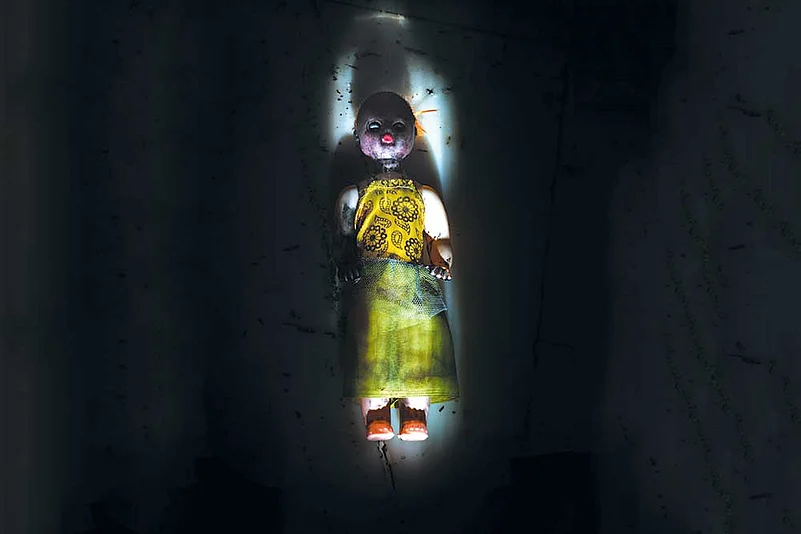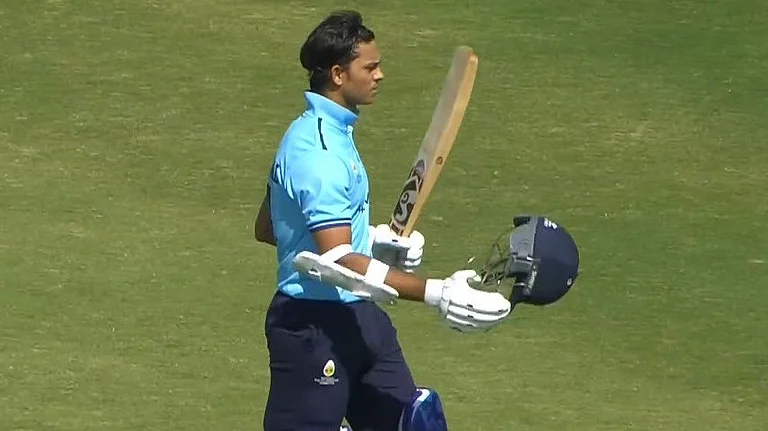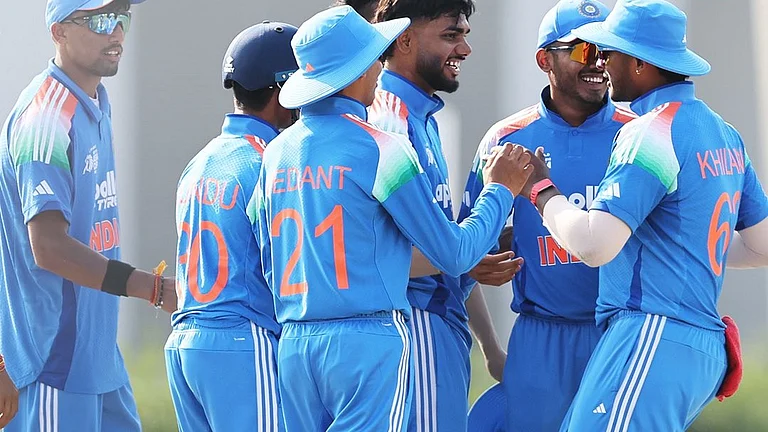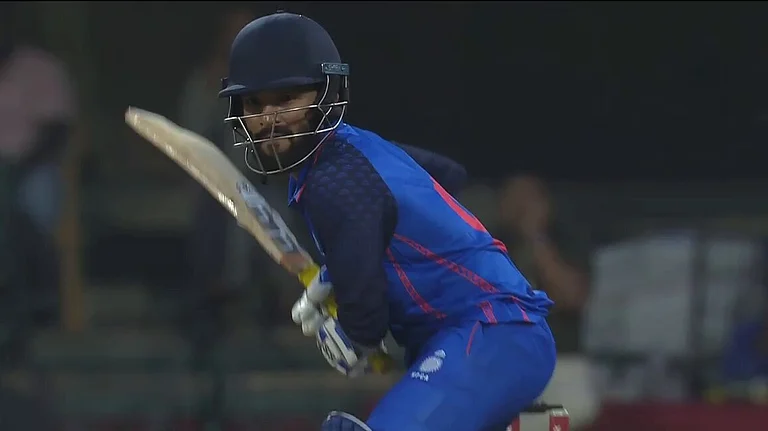No ordinary event qualifies to become news. In India, sexual violence is an ordinary event. According to 2019 NCRB data, a woman is raped every 16 minutes in India. That means 88 women in a day…32,033 women in a year. But only a few such incidents are accorded ‘news value’. The Indian media could justify not covering all rapes with the famous journalistic adage of “dog bites man” not being news. Judged by that logic, one could say—without a tinge of humour—that rape in India is indeed as common as dog bites (50,000 a year).
There are strong socio-cultural reasons for why the Indian media sensationalises a few rape cases and lets go of many others with a near-conspiratorial silence. If one may be blunt, the first response kicks in if the victim is from a dominant caste, urban, educated and fair. If it’s a rural woman, from an oppressed caste and dark, the news adorns itself with silence. Aligned to Hinduism’s centuries-old concept of touchables/untouchables, it seems rape and its severity can be categorised depending on the victim. Is it fair, you may ask. Well, it’s a society where oppressed women are also further oppressed by women of dominant castes. Since women are not equal in the institution of caste, crimes against women are also not equal. Do you need proof that Dalit women can never be India’s daughters? Look at the problems faced by the family of the Hathras victim, and the number of women (including in media) complicit in that.
ALSO READ: The Hateras And Us
What happened to Nirbhaya was undoubtedly barbaric. But it was hardly the first such incident. In 2006, the Khairlanji massacre victims—Surekha and Priyanka—suffered worse brutality at the hands of dominant-caste men. But the same media that fought so relentlessly for Nirbhaya (and ensured the convicts got death sentence) reported Khairlanji only after a month. By then, evidence had been destroyed, witnesses manipulated, the whole case twisted. Compare that with the Delhi crime. It’s plainly evident that not even one per cent of such interest is shown by media when Dalit women are victims. No front-page photos of candle-lit vigils, no clamour for death sentence. The conspiracy is natural, automatic, systemic. In one instance, rapists are criminals. In the other, they are merely dominant-caste ‘activists’—secure in the knowledge that if they rape Dalit women, the law would simply not apply. The whole country would support them—and the media, which silently accepts that discrimination and dresses it up as the discriminating eye of ‘news’, is the biggest enabler of that.
Crimes against women are often approached the same way a theft or an accident would be—clinically, without analysing its social causes. (And it’s not an unplanned fact that media refuses to do that analysis.) Rapes committed to establish male domination or caste supremacy are far higher in number than rapes committed for sexual needs. The latter is an individual crime, the other a social crime. Journalists do not seem to understand this fundamental difference. Even women journalists think caste-based sexual violence suffered by Dalit women is the same as any other rape. The truth, however, is vastly different.
ALSO READ: Red Earth And The Sky A Dalit Blue
Women from privileged castes are raped because they are women; Dalit women are raped because they are Dalits. The former is decided by circumstances, the latter by birth. A Brahmin woman or an OBC woman is never raped for the caste they are born in. Only Dalit women suffer such violence. It’s almost the same as war rapes where it’s enough for a woman to be from an enemy country to be raped. Just as armymen do it, men from dominant castes inflict debilitating violence on Dalit women. Look at the Hathras case—can we call it just a rape? All her body parts were brutally mutilated. The caste criminals wanted to sow the seed of fear and slavery into the minds of Dalits, and they knew this brutality would cost them nothing.

Every girl child born in the cheris or Dalit bastis of Indian villages grows up in fear, for she is in danger of being raped at any age. It’s now that the media is sharing the data: 10 Dalit women raped every day. Why haven’t they ever become headlines? Daily headlines? Every year, every decade, logs an increase in caste crimes. The media, now brandishing data because ‘research’ looks good, is conspicuously silent on exposing the violence hiding behind the numbers. The blood and gore. Is anyone really aware of the ways a rape could happen? It’s hard to even imagine.
ALSO READ: The Ghost Of Manu
News on a ‘rape video’ released in 2016 could serve as a shocking example. The videos are freely available across Uttar Pradesh, for anything between Rs 20 to Rs 200. The videos are more popular in rural areas. Yes, criminals actually videograph their own crime—as they rape women of the same village—and commercialise it. The videos do not hide the face or the screams of the women. These are meant to offer a voyeuristic experience of power for local viewers. Outsiders cannot purchase the videos. The women—threatened with death if they speak out—do not file complaints. They do not even tell their parents about this. Media reports did not mention the social context here, but anyone with a modicum of awareness about caste hegemony and its horrors can be certain that the women cannot be from dominant-caste families. If that were so, that bit of news would have created an apocalypse in Indian society. The media would have camped in the areas.
The rape videos are produced not just for money. It’s a technological atrocity inflicted on Dalits by men who want to perpetuate their caste terror. It’s clear that the same woman can be raped over and over again. The Indian media shows no interest in investigating organised crimes such as these, entrenched as a social fact; it would much rather focus on sensationalising individual cases. Give it a Sushant Singh Rajput any day. That allows full play for yellow journalism, exaggerations, eye-catching vulgarity.
ALSO READ: Casteaways
Why isn’t entrenched crime against women and Dalit women a focus area for media? Because, like society, the media too treats women and Dalits as secondary citizens. The Indian media is a tent occupied by privileged-caste Hindu males. Dalits are completely ignored, and women are not sufficiently represented. Dalit women have not even taken the first step into the supremacist space of journalism. How can we then expect journalism to be true to life, real and from the ground, to have access to lived experiences, to share the existential concerns—even if it deludes itself into thinking it’s ‘honest’ and ‘ethical’? It is even more painful that those who oppress also write about the oppression faced by Dalits and women. The Dalits have still not written their own oppression, the Dalit truth has never been told.
Almost always, men write the news about sexual violence. Along with the fact that they are not fully informed about what and how to write, the typical male mindset flows freely through their words. By repeatedly hovering on the body, they continue to violate the victim again and again. And then their investigative capabilities are used to explore the victim’s ‘character’, her friends, habits, work, marital status, her hobbies…the reasons for rape. This is the problem with men appropriating the voice of women. This is mirrored when dominant-caste women appropriate the voice of Dalit women. Many women journalists and activists casually commit the blunder of seeing caste rape as a pure gender issue, with no understanding of caste and its inherent violence. Even on the Hathras horror, the television debates are largely peopled by non-Dalits. No sign of representation even in debates or assembled quotes!
ALSO READ: Politics As A Sedative
Caste rape almost always happens only in villages, where 65 per cent of India lives and caste and its hegemony are stronger. Does the Indian media write or speak about it? Coverage of rural India begins and ends with agriculture. No media has written about the concentration camps called cheris in villages that are as toxic as the gas chambers created by Hitler. No single media outlet in independent India has questioned the creation of cheris by the institution of caste. That division is the basis for untouchability and all the attendant atrocities. The media does not talk about creating a space for equality in villages where anybody could live anywhere; it does not talk about the everyday battles Dalits wage in merely claiming their rights to common resources; it does not talk about the hundreds of forms of untouchability and atrocities Dalits face every day. Instead, after a Khairlanji, Kathua or Hathras, they milk that issue for the sake of news and create a façade of fighting for justice.
In truth, like media houses, news too has no space for Dalits. According to a survey done by Oxfam-Newslaundry, of the 972 cover stories in 12 magazines, only 10 are related to caste. In a society where not a single day passes without caste atrocities, it’s shameful that journalism—a pillar of democracy—continues to turn a blind eye.
ALSO READ: Interjections, Intersections...
In the caste culture of rural India, rape is an everyday crime. Take even a crime like Hathras, with so much public attention. There’s little attempt to go to the village to describe the wider ecosystem—no statements, no evidence, no context that can tell us how ordinary life is infused with violence. Have there been similar crimes? Chances are very high. It’s common knowledge for Dalits who do field work—in no village in India would the rape of a Dalit woman be an isolated crime. But the media does no such deep investigation. At its most ‘neutral’, it wraps up its news with a bulletin from outside the hospital announcing the death.
Why does one say the Hathras rape could just be one incident in a chain? Older readers may recall the Sanganankulam rapes in the Tirunelveli district of Tamil Nadu in the 1980s. Here, 200 caste Hindu families and 40 Dalit families lived, and rape was common social interchange. Manjula, 16, was raped in front of her younger brothers. Rajaselvam, who carried food for her husband working on the land of a caste Hindu, was raped in the pumpset room. Because they were threatened by dominant-caste men, the women initially did not discuss it even among themselves. As the numbers escalated, the news leaked after a point. Johan Vincent, then MLA of Sanganankulam, conducted an enquiry where 17 women—including Jebamani, Vasantha, Pushpam, Grace, Sornam, Antonyammal, Vasanthi and Santha—came forward to complain about rape. It then became news and turned political. The women met the then PM, Indira Gandhi. The Centre sent a fact-finding team, and the then CM, M.G. Ramachandran, took action against the district collector and dismissed all village officials across the state for being abettors in crime (the post was later abolished). Sanganankulam stands as the singular name for sexual crimes suffered by Dalit women in six lakh villages across India.
With such enveloping caste power around them, Dalit parents do not expose the crime—fearing for their lives and the future of their daughters. For a Dalit woman to wage a battle for justice is as good as burning herself—she has to go against the full umbrella of dominant-caste power, their khap panchayats, their police stations, their political parties, courts and governments. So their stories remain hidden in tears. A committed and ethical journalism could make everyday headlines out of caste atrocities in the villages. But mainstream media in independent India does not consider such a responsibility as part of its duty. Its caste complicity is writ large.
When Jeyaraj and Bennix were killed due to custodial violence at Sathankulam in Tamil Nadu recently, it was media personnel from the same community as the victims who did the investigative journalism even under lockdown, coming up with evidence and witnesses. The case was finally transferred to CB-CID and the criminals arrested. It was exemplary journalism. But it unmistakably reinforces the sense that media ethics works only when caste is shared. For, no media investigation happened into the brutal attack on eight Dalits in Kachanatham of Sivagangai district in 2018, or the rape-murder of Dalit girl Nandhini of Ariyalur district in 2016.
“We have no press. The cruellest tyranny and oppression to which our people are subjected day in and day out all over India are never reported by the press,” Ambedkar had said 70 years ago on Indian media. “Our views on social and political questions are systematically suppressed.” He called it “an organised conspiracy on the part of the press”. Not much has changed. Isn’t it a shame for the highest institution of democracy to run as a caste organisation? Where will the voiceless of this country go? You may ask them to start their own media. Imagine if every caste has its own media. How about separate courts and parliaments too? Why do we then call this a nation? And have a constitution? It is the oppressed of this country who still believe in the idea of a common law and in representative democracy. And it’s the media that stands as prime accused in every social crime happening in this country.
***

Riya Singh
Dalit activist
Caste is a reality. In the Hathras case too, we have seen the reluctance of everyone to name the caste of the perpetrators. Privileged-caste men are outraged about the rape, but they won’t stand with us in the implementation of the SC/ ST act or reservation policy. We need larger solidarity in both. Young Dalit women now have a good presence on social media. Earlier, the stage was dominated by privileged-caste women. We have been telling them to stop speaking on behalf of Dalit women. We have trained people to speak about the oppression and the oppressors.
(The writer is a Chenai-based journalist. Translated by Kavitha Muralidharan. Views are personal.)





















